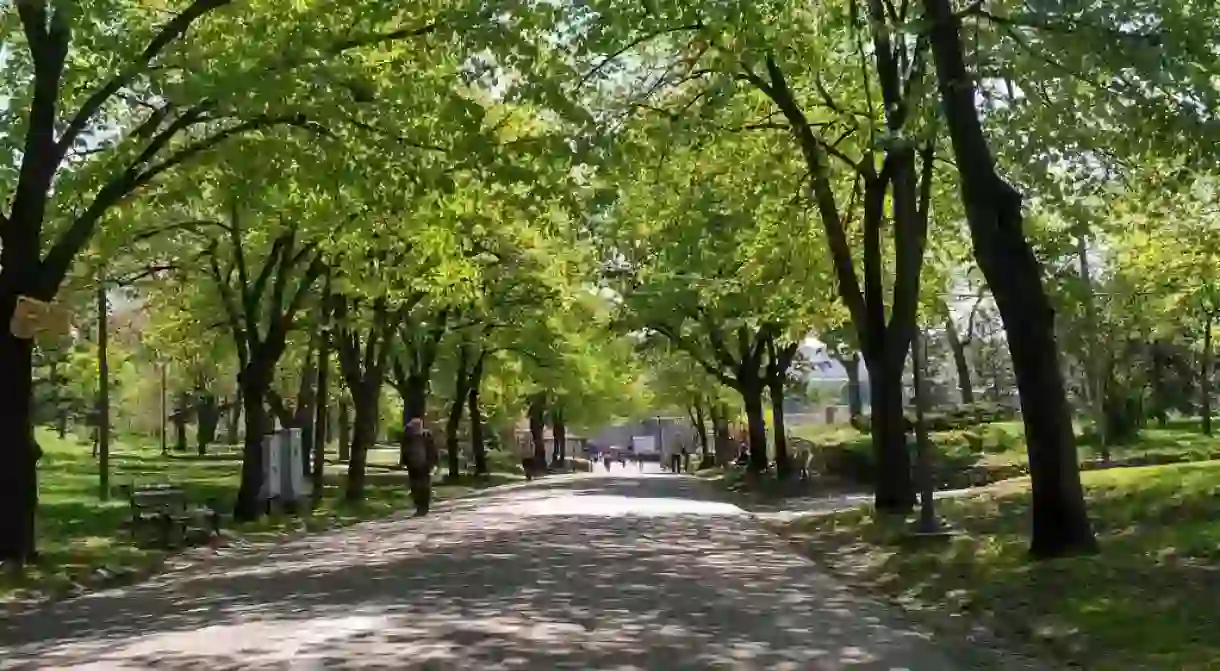The Ultimate Beginner's Guide to Travelling the Balkans

Did you know that he word ‘balkan’ means ‘mountains’ in Turkish? Well, the exact definition in Ottoman Turkish is ‘a chain of wooden mountains’, which refers to the regional Balkan, Rhodope, Diarnic Alps and the Carpathian Mountains. The area evolved very differently from Western Europe, giving adventurous travellers a different, and a somewhat less explored, experience. Here’s a short guide on the essentials for visiting the Balkans.
Planning your next adventure? Start here with these bookable tours, trips and experiences across the Balkans
Where are the Balkans?
Geographically, the Balkans refers to Europe’s large eastern peninsula, including Yugoslavia, Albania, Bulgaria, Romania, Moldova and parts of Greece and European Turkey. But not everyone agrees with this definition. Some identify based on historical and cultural terms, which tends just to include Bulgaria and the Former Yugoslavian nations. If you hear the name, it may refer to some or all of the countries mentioned above.

Where to Go:
The best places to visit in the Balkans depends on your travel interests. Croatia has a mainland coastline of 1,777 kilometres (1,104 miles) and 1,246 islands in the Adriatic. Bosnia, on the other hand, has only a few kilometres of shore but makes up for the lack of space with mountains, rivers and canyons.
There’s a rich history here too with Roman, Byzantine, Ottoman and Yugoslavian influences as well as one or two Kingdoms. Take the time to understand the complicated story to appreciate the complex Balkan past.

On a broader Balkan trip, consider Bulgaria, Macedonia, Serbia, Kosovo, Bosnia, Montenegro and Croatia. Albania is worth visiting too. Favourites include Macedonia’s Skopje and Lake Ohrid, Montenegro’s Bay of Kotor, Serbia’s Nis and, of course, Belgrade, Bosnia’s Sarajevo and Mostar, and Croatia’s Dubrovnik.
If you want to get a more off-the-beaten-path experience, check out Plovdiv in Bulgaria, Kosovo’s Pristina and Prizren, Banja Luka in Bosnia and Albania’s Tirana, Duress and Berat.
How to Travel:
The best way to get into the Balkans is by flying. European budget airlines, in particular Wizz Air, connects to many destinations. You shouldn’t have any difficulties finding an inexpensive flight to Sofia (Bulgaria), Skopje (Macedonia) and Tuzla (Bosnia).
The best way to travel within the Balkans is by either the bus or train. Getting around is quite easy, but for someone without experience, it can be frustrating and challenging. Prices aren’t as low as you may think; expect to pay at least US $10 or more for a one-way ticket.
If you’re travelling over a land border, you may or may not get an entrance or exit stamp, but this rarely causes problems.

Typical Travel Difficulties:
One of the biggest difficulties for Balkan travel is finding reliable information on timetables, costs and points of departure. Information online is hard to come by and even then, can’t be trusted. Schedules at the station may or may not be up to date.
You usually need to buy tickets from the station on either day of departure or in advance and give them to the drivers. Be aware some routes also charge to store luggage.
For the Balkan novice, this can all be daunting. But there’s a simple solution that works every time. And the majority of tourists, from my experience, fail to do it and end up frustrated. All you need to do is write the destination in either Latin or Cyrillic, the date, a time you want to depart, a price with a question mark and show them the day before. For example: ‘Sarajevo, 01/01/18, 11:00? 10KM?’
Give them the paper and a pen. If the time and price are wrong, they’ll change it, and you have your answer. Ask if they speak English, if yes, be as direct as possible. If not, rely on your paper.
Safety Tips:
Is it safe to travel to the Balkans? The answer is yes. Despite the negative connotations the region has for violence and conflict, the Balkans aren’t at war anymore. Whereas ethnic tensions remain, especially in the Former Yugoslavia, and protests are common, you’ll rarely face difficulties.
Regarding safety, watch out for gypsies, who often beg and follow foreigners around. Also, be wary of scams in touristy areas.
But don’t let this deter you, the Balkans are safe. The kind of attacks that are becoming more common in Western Europe have not reached this area. And you’ll find warmth and hospitality from the people you meet.

A Balkan Experience:
The Balkan experience is different from Western Europe, but travelling in the region is rewarding because of the history, culture and relatively affordable travel costs. You’ll quickly fall in love with the region.













